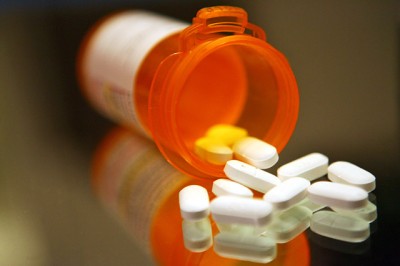
The 2-1 decision overturns two district court rulings in 2012 brought by five consumer advocacy groups – the Natural Resources Defense Council (NRDC), the Center for Science in the Public Interest, Food Animal Concerns Trust, Public Citizen, and the Union of Concerned Scientists. They tried to get the FDA to ban the routine use of antibiotics in healthy animals, unless pharmaceutical companies could prove that the antibiotics weren’t harmful to humans.
Eighty percent of antibiotics sold in the US are given to animals in the ag industry.
The appeals court’s decision stands in stark contrast to an April report from the World Health Organization (WHO), which warned against the common use of antibiotics.
“The world is headed for a post-antibiotic era, in which common infections and minor injuries which have been treatable for decades can once again kill,” said Dr. Keiji Fukuda, WHO’s Assistant Director-General for Health Security.
New “Survival Herb Bank” Gives You Access to God’s Amazing Medicine Chest
“Effective antibiotics have been one of the pillars allowing us to live longer, live healthier, and benefit from modern medicine,” Fukuda said. “Unless we take significant actions to improve efforts to prevent infections and also change how we produce, prescribe and use antibiotics, the world will lose more and more of these global public health goods and the implications will be devastating.”
In the US, at least 2 million people become infected each year with superbugs, and at least 23,000 people die annually as a direct result of these infections.
The FDA acknowledged earlier this year that the widespread usage of antibiotics in agriculture was unhealthy and unsafe, and it released a plan to phase out the usage of the drugs, although the plan was voluntary.
“Because all uses of antimicrobial drugs, in both humans and animals, contribute to the development of antimicrobial resistance, it is important to use these drugs only when medically necessary,” the FDA said. “Governments around the world consider antimicrobial-resistant bacteria a major threat to public health. Illnesses caused by drug-resistant strains of bacteria are more likely to be potentially fatal when the medicines used to treat them are rendered less effective.”
The Illustrated Guide To Chickens — What You Need To Raise Your Own Flock
Health advocates believe that the problem comes from overuse in both humans and animals. Doctors prescribe antibiotics to their patients to treat even minor illnesses. And livestock are given feed with antibiotics to make them grow bigger and faster. According to the Appeals Court, “for each dose of antibiotics given to humans for medical purposes, four doses are given to livestock for non-medical reasons to encourage faster, healthier growth.”
But using antibiotics — even in small amounts — for animals over long periods of time makes a perfect breeding ground for bacteria to develop resistance to drugs. So the drug-resistant bacteria lives, and the bacteria that is unable to resist dies. And for the last several decades, these superbugs have mutated and become stronger.
Story continues below video
“The science was there in 1977 and 40 years later, it’s only gotten stronger that these low-dose, routine use of antibiotics on livestock is causing development of antibiotic-resistant bacteria and that bacteria is coming off the farm in many different ways and affecting humans,” Mae Wu, an attorney with NRDC, told Food Safety News.
Judge Robert Katzmann, who dissented, said the majority’s opinion allows “the FDA to openly declare that a particular animal drug is unsafe, but then refuse to withdraw approval of that drug.
“It also gives the agency discretion to effectively ignore a public petition asking it to withdraw approval from an unsafe drug. I do not believe the statutory scheme can be read to permit those results,” he wrote.
Do you think that antibiotics given to livestock could lead to a world where antibiotics don’t work? Write your response in the comments section below.